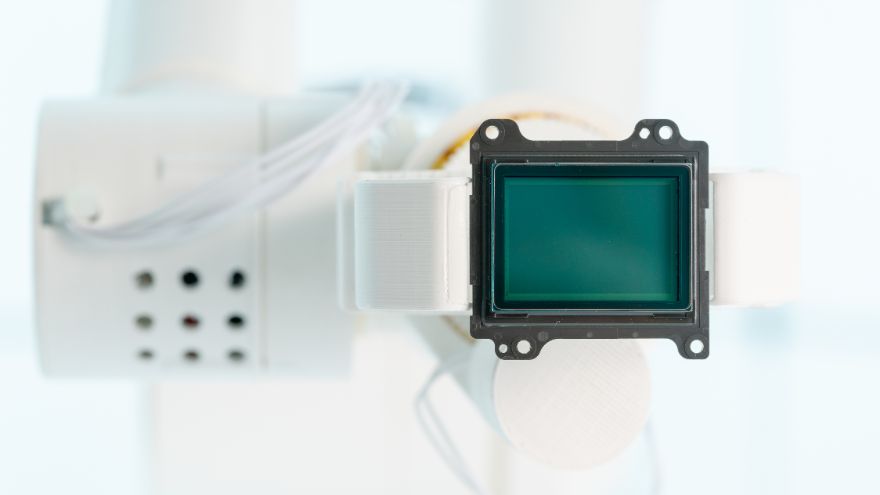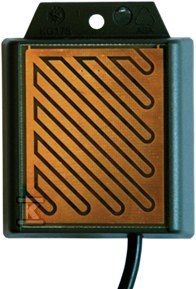Rain sensors are electronic devices used in modern, automated plant irrigation systems. Are you thinking about installing a rain sensor and don't know where to start? Use our guide! We explain why it is worth equipping the garden irrigation system with rain sensors - wired or wireless, and we advise where to install the rain sensor so that the system works effectively.

Check out rain sensors at the Onninen wholesaler
What are the benefits of a rain sensor in the garden?
Rain sensors are responsible for detecting and controlling atmospheric precipitation. They make measurements in real time and provide feedback in the form of a signal sent to the installation. They cooperate with the controller in the automated irrigation system. The controller optimizes operating parameters in terms of humidity. When it rains, watering the plants in the garden is automatically temporarily stopped, which helps avoid wasting water and damaging crops due to over-watering.
 A modern rain sensor guarantees high precision of operation and immediate response to incoming rain. It is easy to install, use and maintain. You do not need any specialist knowledge or skills to configure and operate it. The device may be continuously exposed to weather conditions.
A modern rain sensor guarantees high precision of operation and immediate response to incoming rain. It is easy to install, use and maintain. You do not need any specialist knowledge or skills to configure and operate it. The device may be continuously exposed to weather conditions.
Rain sensors often work with other intelligent home or garden management systems. They can send data, for example, to roller blind and sun protection controllers or temperature/freeze meters. The frost sensor will break the circuit when the temperature drops below a set critical value, minimizing the risk of irrigation system failure. Ultimately, you have a chance to create a consistent, reliable installation that is perfectly tailored to the needs of your household.
It is worth seeing that the irrigation sensor is a reusable device. It does not lose its shape or sensitivity to moisture over time. The typical design includes a boom or hitch and a plastic container containing hygroscopic disks. After drying, they regain their original shape.
Where should the rain sensor be installed?
There are two main types of rain sensors: wireless and wired - each mounted in a different way.
![Rain sensor Contact Simon SIMON55 controlled by smartphone [Wi-Fi]](https://onninen.pl/lib/images/21808_f_ECD1W_m.jpg) The wireless rain sensor is equipped with a transmitter, i.e. a radio antenna that transmits a radio signal to the receiver when the rainfall exceeds the permissible level. The transmitter also sends information to the receiver about the drying of the rings. The receiver also has a radio antenna. It is connected via a cable to the controller. It should be located as close as possible to the controller and solenoid valves.
The wireless rain sensor is equipped with a transmitter, i.e. a radio antenna that transmits a radio signal to the receiver when the rainfall exceeds the permissible level. The transmitter also sends information to the receiver about the drying of the rings. The receiver also has a radio antenna. It is connected via a cable to the controller. It should be located as close as possible to the controller and solenoid valves.
The wired rain sensor is connected to the controller with a cable, so the place of its installation should be carefully considered. The shorter the cable, the stronger the signal and the lower the risk of interruptions. The cable is often included in the kit. If a several-meter cable cannot be used between the sensor and the controller, it is better to consider a wireless variant - necessarily compatible with your system.
Regardless of the type chosen, the rain sensor should be placed in the garden in a place that allows for easy rainfall measurement, is uncovered and at the same time protected from all-day exposure to sunlight.
Rain sensors at the Onninen wholesaler
In our warehouse you will find various types of rain sensors - both basic models and more advanced devices, including: sensitivity adjustment. All rain sensors come from manufacturers or official distributors. We cooperate only with reputable companies and brands, such as F&F or Kontakt-Simon SA. This gives our customers the certainty of long and satisfactory use of individual devices and the irrigation system created on their basis.
Are you wondering whether a particular type of rain sensor can be used in your garden? Do you have additional questions? Contact us! We will tell you which rain sensor to choose for your garden.